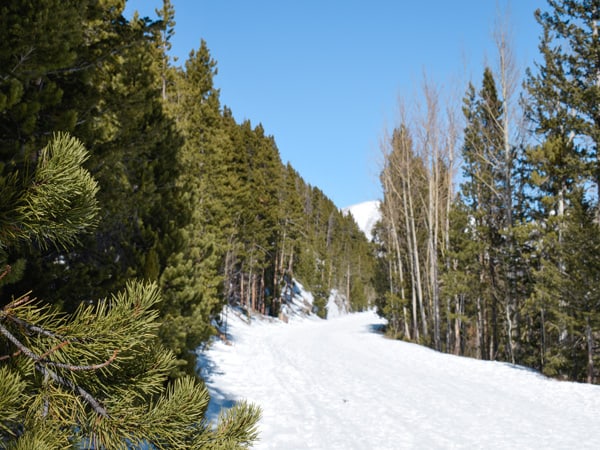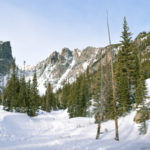
Before my first time snowshoeing, I read an article that talked about how easy it was and mentioned that if you could hike, you could snowshoe. While I don’t disagree in principle, I found these two activities differed much more than I expected. I wish had been a little more prepared with snowshoeing tips and advance knowledge of certain aspects of this winter adventure. Here’s what you need to know:
1. Snowshoes are a little bit awkward.
They can be finicky to put on, depending on the straps. If you’re renting, be sure to ask for a demonstration of how to put them on and how to adjust the fit.
Only the ball of your foot will be solidly attached to the base of the snowshoe. Your heel is strapped in but not attached to the base, and the snowshoe almost acts like a flip flop as you lift your foot up to take a step.
Be careful not to step on your other snowshoe as you move your feet along – it’s easy to fall!
2. You’ll kick snow up onto your calves.
As you walk, your snowshoes will kick snow up onto the backs of your legs. Snow boots that go several inches up your calves are your best bet, as most of the snow will stay on the backs of your boots.
Your boots should also tie tightly around your calves (make sure they aren’t open at the top like rain boots or riding boots). This way, you can prevent the snow from slipping down into your shoes even if (when) some snow gets on your pants.
My hiking boots, even though they go up around my ankle, would not have cut it. My feet and legs would have ended up cold and wet! Consider renting snow boots when you rent your snowshoes if you don’t own any.
Wear waterproof pants or ski pants if you have them. If you don’t, athletic pants will work just fine if you have proper boots.
3. You will still sink into the snow some.
I don’t know how I thought snowshoes physically worked, but I pictured myself gliding magically across fresh powder like Jesus walking on the water. Unfortunately, that was not reality!
Unless the trail is heavily-trafficked and packed down, you will likely sink 6 inches or so into the snow. If you’re wearing snow boots, this isn’t a big deal – you’ll stay dry and warm.
4. You can’t walk on all snow.
If it’s your first time snowshoeing, you might be tempted to go off the trail, but be cautious if you do. Some snow will be too “soft” – and you’ll sink much further than 6 inches! Two of the three people in my party (not me!) fell through to their thighs when they tried to go off-trail.
You don’t need to worry about this if you stay on designated snowshoe trails, but keep in mind that not every summer hiking trail works well as a snowshoe trail. Search for specific snowshoe trails in your destination, and read the recent reviews on AllTrails for current trail conditions.
5. Snowshoeing is more difficult than hiking.
Sinking down into the snow means you’re using extra effort with every step. Make sure you choose the right level of difficulty (preferably flat or just a small elevation gain) for your first excursion.
Also, keep in mind that trails are not always marked in the winter, and it’s never a good idea to blindly follow others’ tracks in the snow. Download the trail map from AllTrails (you do need the Pro version), or download the area to your offline maps on Google Maps.
6. You might not even need snowshoes.
If the snow is packed down tightly enough, snow boots or even hiking boots with microspikes might be sufficient. These are much easier to carry around, put on, and walk in than snowshoes are, but you’ll sink through any loose snow, so be sure to stay on the packed down paths.
AllTrails reviews generally give information about trail conditions on the more popular routes. You may also be able to ask the rental company whether microspikes or snowshoes would be your best bet based on the trails you plan to explore.
7. Be sure you are appropriately dressed!
Wear layers (thermal base, jacket, coat, gloves, and a hat are necessities), and carry a backpack to shed these layers as you warm up. Barefoot Theory has a great post about how to dress for winter adventures.
Ready to try it out? Rocky Mountain National Park in Colorado is a great place in the US to enjoy scenic nature views and try out a new activity.
You Might Also Like...
-
Everything You Need to Know About Visiting Rocky Mountain National Park in Winter
Rocky Mountain National Park is spectacular in the winter! But there are some aspects of visiting in the off-season you should prepare for.
-
Everything You Need to Know About Visiting Rocky Mountain National Park in Winter
Rocky Mountain National Park is spectacular in the winter! But there are some aspects of visiting in the off-season you should prepare for.

